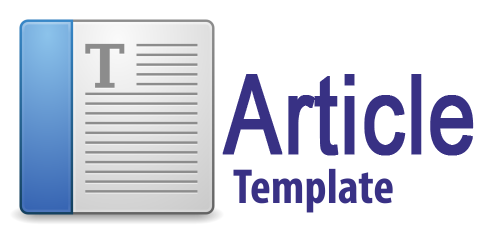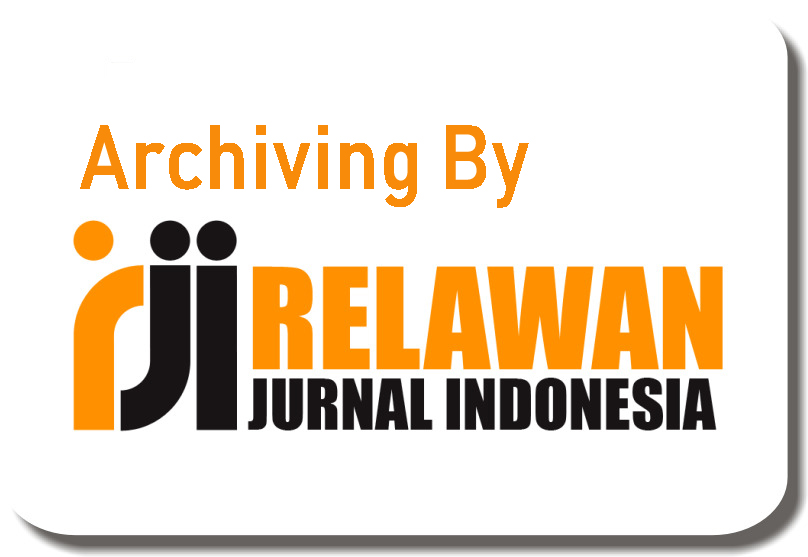The Effect of Nearpod in Enhancing Writing Skills of Thai EFL Students
Abstract
The study was motivated by the identified shortcomings in students’ ability to write effectively in English, the less appealing teaching approach employed by the teachers, the emphasis placed on assignments and tests, and the limited use of interactive learning resources. This study examines how the integration of Nearpod affects the English writing proficiency of students in Satun, Thailand. The objective of this research is to explore how Nearpod influences the improvement of students’ English writing skills in Satun, Thailand. This study employed pretests and posttests as instruments for data collection. This research employs the following data analysis techniques: 1. Normal Distribution Test, 2. Assessment of Variance Homogeneity, and 3. Hypothesis Evaluation Using the t-Test. To test the hypothesis, a t-test was utilized following the assessment of data normality and homogeneity. When the t-test findings indicated a significant impact on fertility (sig (2-tailed) = 0.001 < 0.05), The rejection of the null hypothesis (Ho) led to the acceptance of the alternative hypothesis (Ha). The utilization of interactive learning media, such as Nearpod, markedly enhances the English ability in written expression Muslim Suka lower secondary school students in Thailand, surpassing the efficacy of conventional teaching approaches.
Keywords
Full Text:
PDFReferences
Amelia, R. (2022). Interactive learning media to improve writing skills. Journal of Education and Learning, 11(1), 45-53.
Anisa, F. (2021). Writing instruction using interactive media. Journal of Education and Technology, 6(3), 150-158.
Defazio, J., Jones, J., Tennant, F., dan Hook, S. A., (2010), Academic Literacy: The Importance and Impact of Writing Across the Curriculim ± A Case Study, Journal of the Scholarship of Teaching and Learning, Vol. 10 (2): 34-47. https://www.learntechlib.org/p/54816/
Fitriani, R. (2020). Constructivist approach in writing instruction. Journal of Education and Technology, 8(1), 55-63.
Hananuraga.R. (2022). Types Of Grammatical Error Encountered in The English Composition of The Third Grade Students of International Boarding School Amanatul Ummah Surabaya. Jurnal Pendidikan dan Sastra Inggris. 2(3). https://doi.org/10.55606/jupensi.v2i3.712
Hardi, V. A. (2020). Edukatif : Jurnal Ilmu Pendidikan The Rules Of Feedback In Writing Class. 2(3), 244–252. https://doi.org/10.31004/edukatif.v2i3.147
Kusumawardhani, P. (2017). The Analysis Of Conjunctions In Writing An English Narrative Composition: A Syntax Perspective. Jurnal Bahasa dan Sastra. 9(1) . https://doi.org/10.31294/w.v9i1.1319
Kirkpatrick, A. (2012). English language education in Thailand: A review. Journal of Language and Linguistic Studies, 8(1), 1-12.
Lestari, P., & Sihombing, L. H. (2022). Exploring A Digital Tool “Nearpod” to Improve Students’ Skill in Writing. Edupedia, 6(2), 73–79. https://doi.org/10.24269/ed.v6i2.1502
Margana.,Humaera Silvia Maristy. (2020). Enhancing Students’ Writing Abillity Through Contextualization Practices. Jurnal Litera. Universitas Negeri Yogyakarta. 330-440. https://doi.org/10.21831/ltr.v19i2.33348
Mckay, L., & Ravenna, G. (2016). Nearpod and the Impact on Progress Monitoring. CCNews, 27(1), 23–27. Retrieved from http://news.nearpod.com/CCTE Nearpod Research.pdf
Moses, R. N., & Mohamad, M. (2019). Challenges faced by students and teachers on writing skills in ESL context: A literature review. Creative Education, 10, 3389–3391. https://doi.org/10.4236/ce.2019.1013260
Nuraini, S. (2021). Digital media use in school writing instruction. Journal of Education and Learning, 8(3), 134-142.
Ningsih, S. (2022). Technology use in writing instruction. Journal of Language and Literature Education, 9(3), 120-128.
Pramudito, A. (2020). Writing skills in English language learning. Journal of Education and Learning, 8(4), 112-120.
Pratiwi, N. (2020). Digital media implementation in writing instruction. Journal of Educational Technology, 12(1), 45-52.
P.Coloquit. (2020). Improving Students’ English Writing Proficiency through Interactive Writing Technique. 1(1). ISSN: 2721 8236. Journal of English Education and Linguistics. https://doi.org/10.56874/jeel.v1i1.50
Sari, D. P., & Rahmawati, A. (2021). Interactive media's effect on students' writing skills. Journal of Education and Learning, 8(2), 123-130.
Sari, M. (2021). Interactive learning media's effect on students' writing skills. Journal of Education and Learning, 10(2), 90-98.
Sari, R. (2021). Technology-based learning media to improve writing skills. Journal of Technology and Education, 10(2), 67-75.
Salahi, F., & Farahian, M. (2021). Constructing and validating a questionnaire on barriers to EFL learners’ reflective writing. Asian-Pacific Journal of Second and Foreign Language Education, 6(1). https://doi.org/10.1186/s40862-021-00124-3
Sanmugam, M. A., Selvarajoo, A., Ramayah, B., & Lee, K. W. (2019). Use Of Nearpod as Interactive Learning (pp. 8908–8915). https://doi.org/10.21125/inted.2019.2219
Sholikhah, N., & Ningsih, F. (2023). Interactive Pathways: Exploring Students’ Acceptance of Using Nearpod For English Grammar Proficiency. Jurnal Bahasa Lingua Scientia, 15(2), 415-439. https://doi.org/10.21274/ls.2023.15.2.415-439
Yunita, N. K. (2020). Penggunaan Media Nearpod Untuk Meningkatkan Motivasi Belajar Siswa Dalam Pembelajaran Pendidikan Agama Hindu Secara Daring di SD Petra Berkat Tahun Pelajaran 2020/2021. Ilmu Pendidikan, 3.
Yulianti, R. (2020). Learning media's effect on students' writing skills. Journal of Education and Learning, 9(2), 78-85.
DOI: https://doi.org/10.31004/jele.v%25vi%25i.1243
Refbacks
- There are currently no refbacks.
Copyright (c) 2025 Annida Adhwa Br Samosir, Pirman Ginting

This work is licensed under a Creative Commons Attribution-ShareAlike 4.0 International License.



